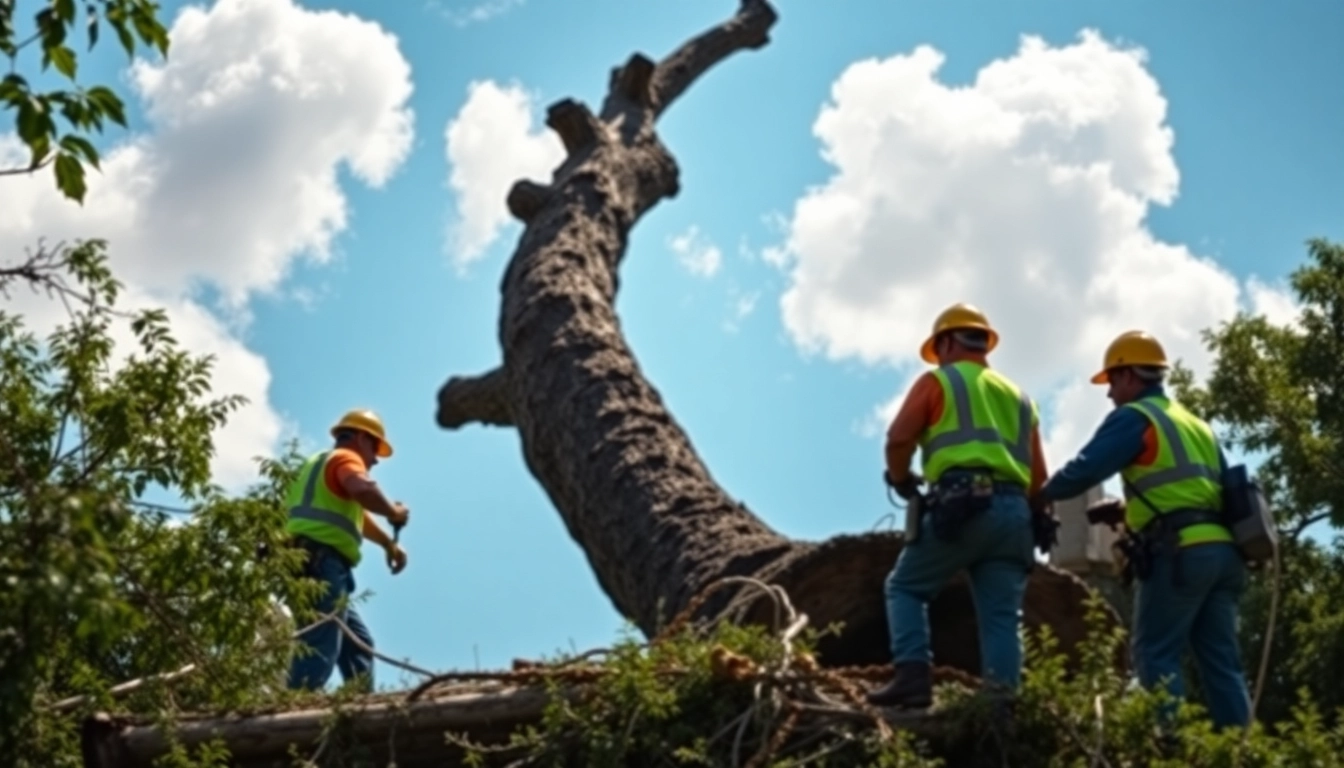Understanding Emergency Tree Service
When nature unleashes its fury through storms, flooding, or high winds, trees can become a hazard to homes and public safety. This is where emergency tree service comes into play—providing critical assistance to managing and mitigating tree-related emergencies. In this comprehensive guide, we delve into what constitutes an emergency tree service, the types of services offered, and essential factors to keep in mind when you find yourself in need of these urgent services.
What Constitutes an Emergency?
An emergency tree situation may arise when a tree poses a danger to people or property. Examples of emergencies include:
- Fallen Trees: Trees that have collapsed due to extreme weather conditions can block roads, damage homes, or injure people.
- Detached Limbs: In strong winds or storms, large branches may break off, hanging precariously and risking further falls.
- Uprooted Trees: Trees that have been uprooted may lean dangerously close to structures or vehicles, posing a significant risk.
- Pest Infestation: An infestation can compromise the structural integrity of a tree, leading to potential collapses.
Types of Emergency Tree Services Offered
Emergency tree services encompass a variety of actions to address hazardous situations, including:
- Emergency Tree Removal: Quickly removing trees that are a direct threat to safety.
- Tree Trimming: Cutting back branches to prevent them from falling.
- Storm Damage Assessment: Inspecting trees post-storm to evaluate any damage or hazards.
- Cabling and Bracing: Providing support for weakened trees, extending their life and preventing falls.
When to Call for Emergency Service
Recognizing when to call for emergency tree service can be critical. If you see a tree that is:
- Leaning at an unusual angle after a storm.
- Obstructing access to your home or emergency exits.
- In contact with power lines.
- Infected by pests or disease.
It’s imperative to contact professionals immediately. Delaying action could result in extensive damage or injury.
Choosing the Right Emergency Tree Service Provider
When faced with a tree emergency, selecting the right provider can make a significant difference. Here are important factors to consider:
Factors to Consider When Selecting a Service
- Availability: Emergency tree services should be available 24/7. Confirm that the provider can respond quickly to urgent situations.
- Experience: Look for companies with a proven track record in emergency situations.
- Insurance: Ensure that the company is insured and carries liability coverage to protect yourself from potential claims.
- Methodology: Consistent operational standards and professionalism during task execution are critical.
Checking Qualifications and Certifications
Hiring a certified arborist or a company that employs them is essential. Certification bodies such as the International Society of Arboriculture (ISA) or the Tree Care Industry Association (TCIA) can provide credentials to verify the qualifications of tree service companies.
Reading Customer Reviews and Ratings
Online reviews can provide insight into customer satisfaction and service quality. Look for testimonials on platforms like Google, Yelp, or Angie’s List to gauge the company’s reputation. Pay particular attention to how they handle emergencies, as this reflects their capability in high-pressure situations.
Cost of Emergency Tree Services
Understanding the cost associated with emergency tree services can help you prepare financially. Various factors influence pricing, which can frequently deter homeowners from seeking professional help during an emergency.
Average Pricing Guidelines
The cost of emergency tree services varies widely. For smaller trees or straightforward removal processes, prices can range from $300 to $700. Conversely, larger trees or those in difficult locations may escalate in cost, with fees ranging from $700 to $1500 or more. As with any service, it’s advisable to obtain multiple quotes for comparison.
What Affects Pricing?
The final price is influenced by several key elements, including:
- Tree Size: Larger trees require more time and equipment to remove.
- Location: Trees in hard-to-reach areas will typically incur higher costs due to the extra effort involved.
- Time of Service: Emergency service charges may be higher than standard rates, particularly during weekends or holidays.
- Job Complexity: Additional costs may apply for specialized services like stump grinding or trimming.
Insurance and Payment Options
Many homeowners’ insurance policies cover tree removal and damage under certain conditions. It’s vital to contact your insurance provider to understand your coverage before engaging a service. Moreover, consider finding out what payment options the tree service company offers, including financing plans or discounts for cash payments.
Safety Measures During Emergency Tree Removal
While dealing with hazardous trees, safety must be the priority. Proper protocols and equipment not only ensure the safety of the workers but also protect your property.
Personal Safety Protocols
Individuals should adhere to safety rules during and after tree removal, including:
- Wearing appropriate personal protective equipment (PPE), such as helmets, gloves, and goggles.
- Maintaining a safe distance from the tree until removal is assured.
- Marking safe zones in proximity to the removal site to prevent injuries.
Equipment Used in Emergency Services
Emergency tree service professionals utilize a variety of specialized equipment to ensure effective and safe removal, such as:
- Chainsaws: Essential for quick cuts in tree trunks and branches.
- Wood Chippers: For processing branches into mulch.
- Lifts and Cranes: When working on tall trees, aerial devices ensure safe access and maneuverability.
- Personal Protective Equipment (PPE): Ensures worker safety during operations.
Post-Removal Site Safety
After tree removal has been completed, it is vital to check for any potential hazards that linger:
- Removing debris from the site to prevent tripping.
- Stump grinding to avoid future issues with pests or regrowth.
- Checking for leaks or damages to fences, power lines, or surrounding trees.
Preventive Measures to Avoid Tree Emergencies
The best way to deal with tree emergencies is to prevent them from occurring in the first place. Proactive maintenance can save time, money, and ensure safety.
Regular Tree Inspections and Maintenance
Routine inspections should be a part of homeowners’ seasonal plans. A certified arborist can identify early signs of problems, enabling timely intervention. Regular maintenance, including trimming and pruning, aids in the overall health and strength of trees.
Identifying Hazardous Trees
Homeowners should be educated on how to recognize trees that may pose a threat:
- Look for dead branches, or significant gaps in the canopy.
- Examine the trunk for cracks or decay.
- Inspect the roots for signs of rot or swelling.
Community Resources for Tree Care
Many communities offer resources to help residents understand tree care better. Engaging local workshops or community programs can provide valuable information on maintaining healthy trees and identifying hazardous conditions.



